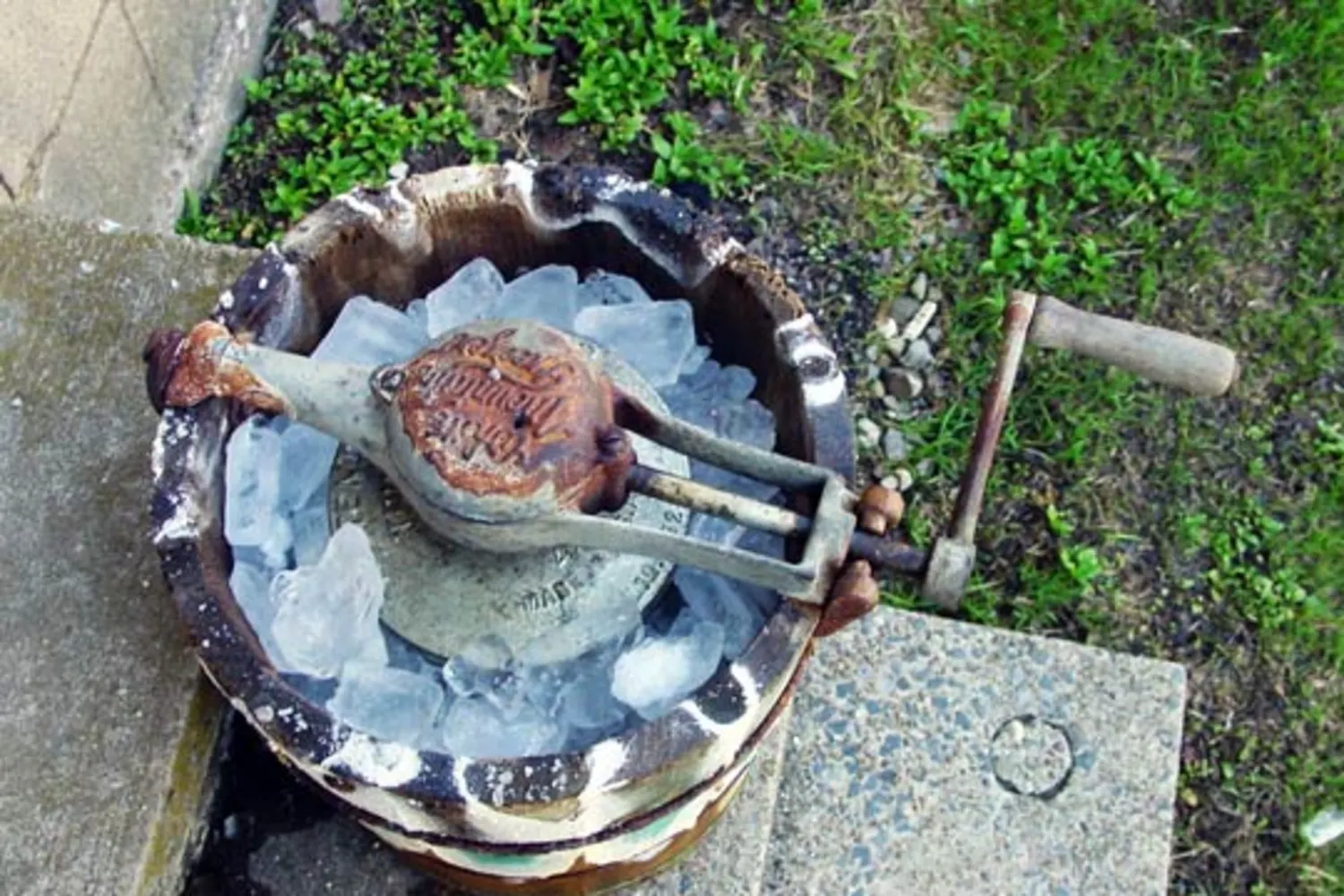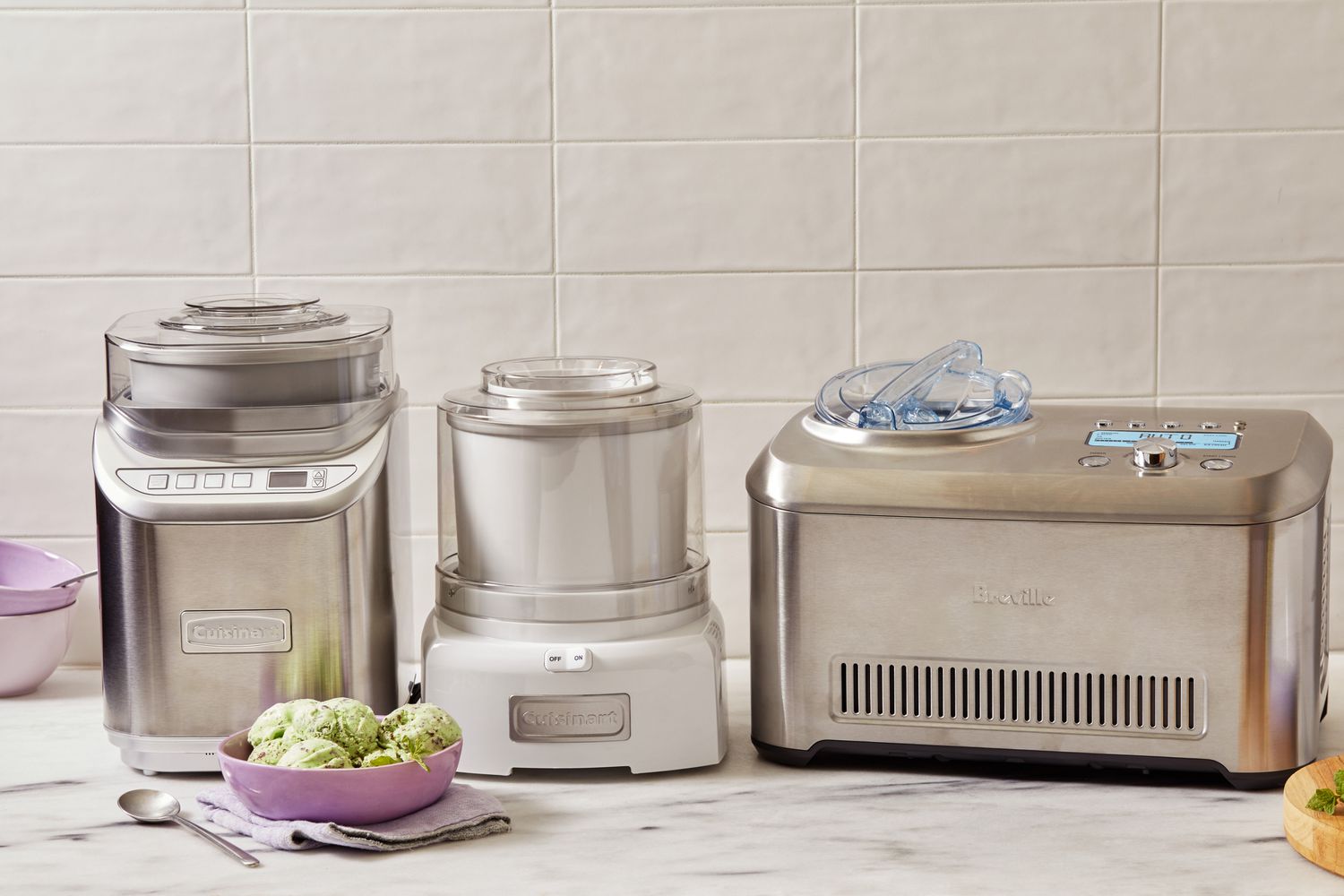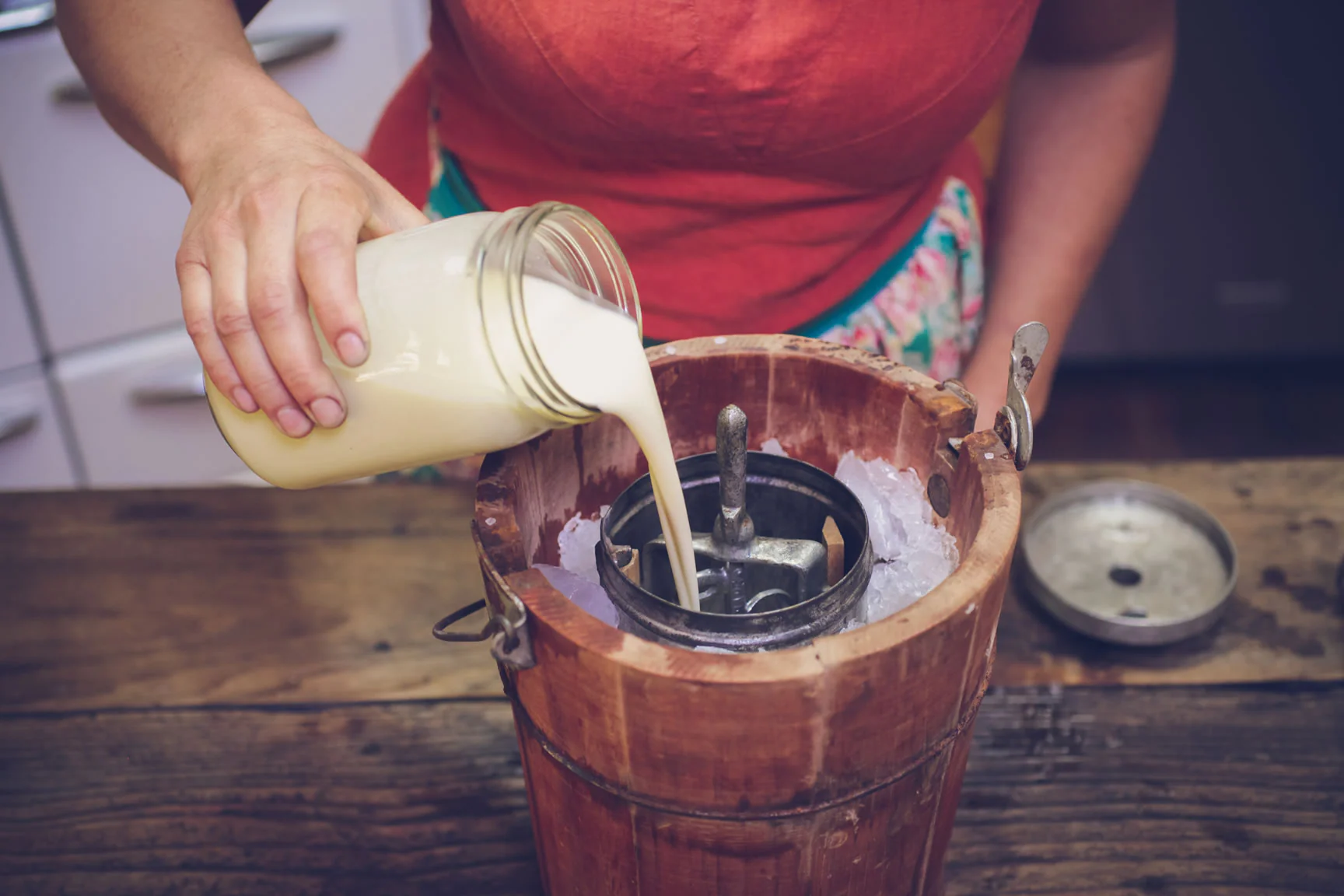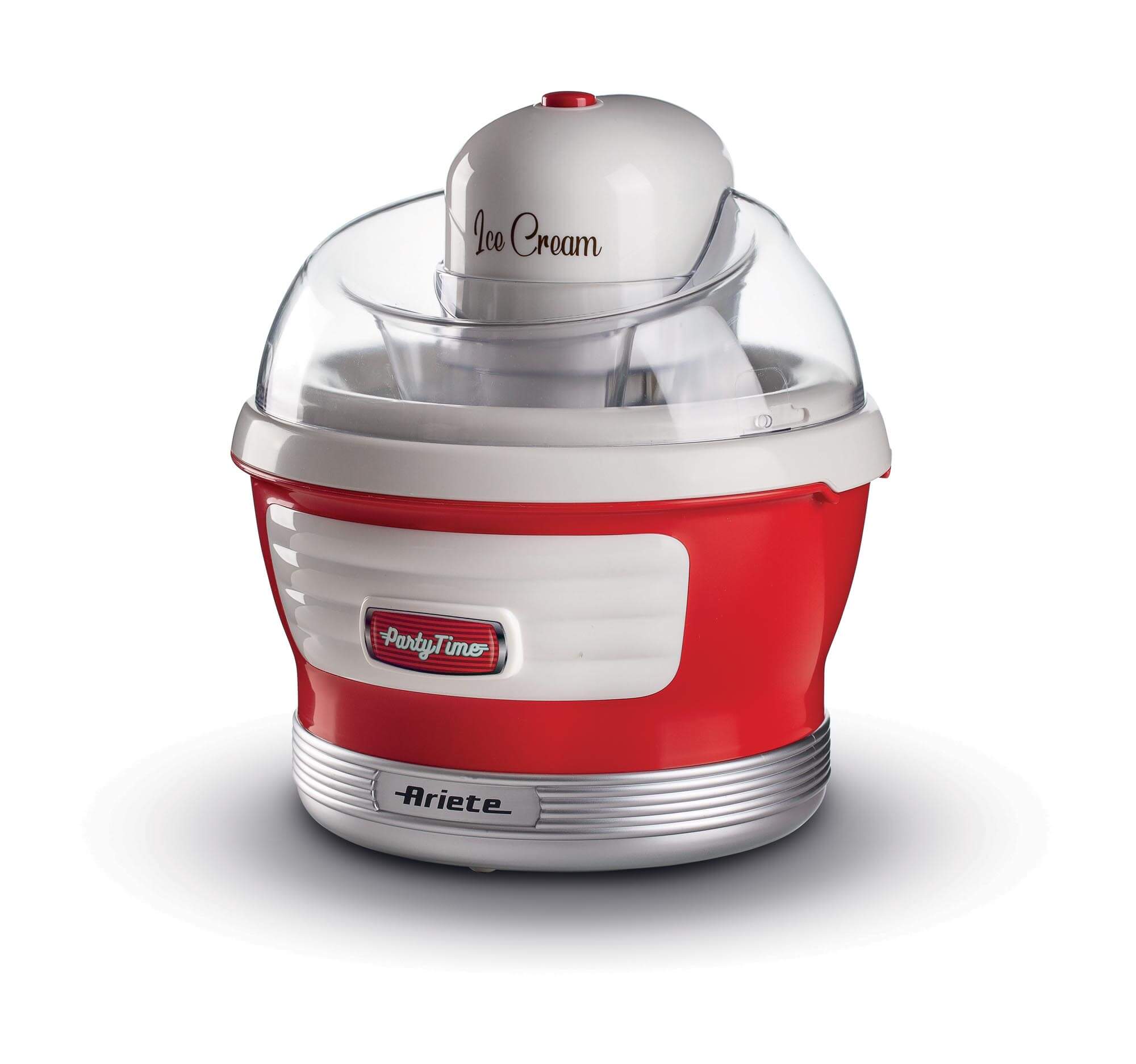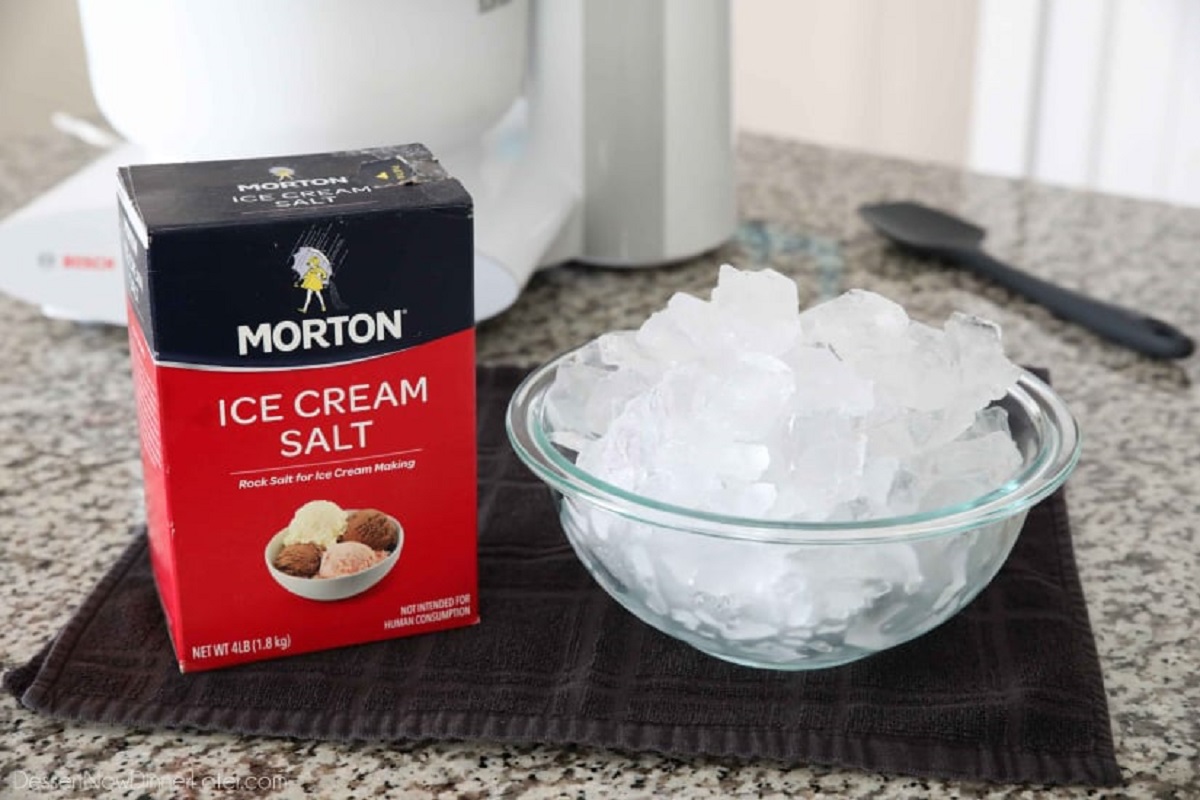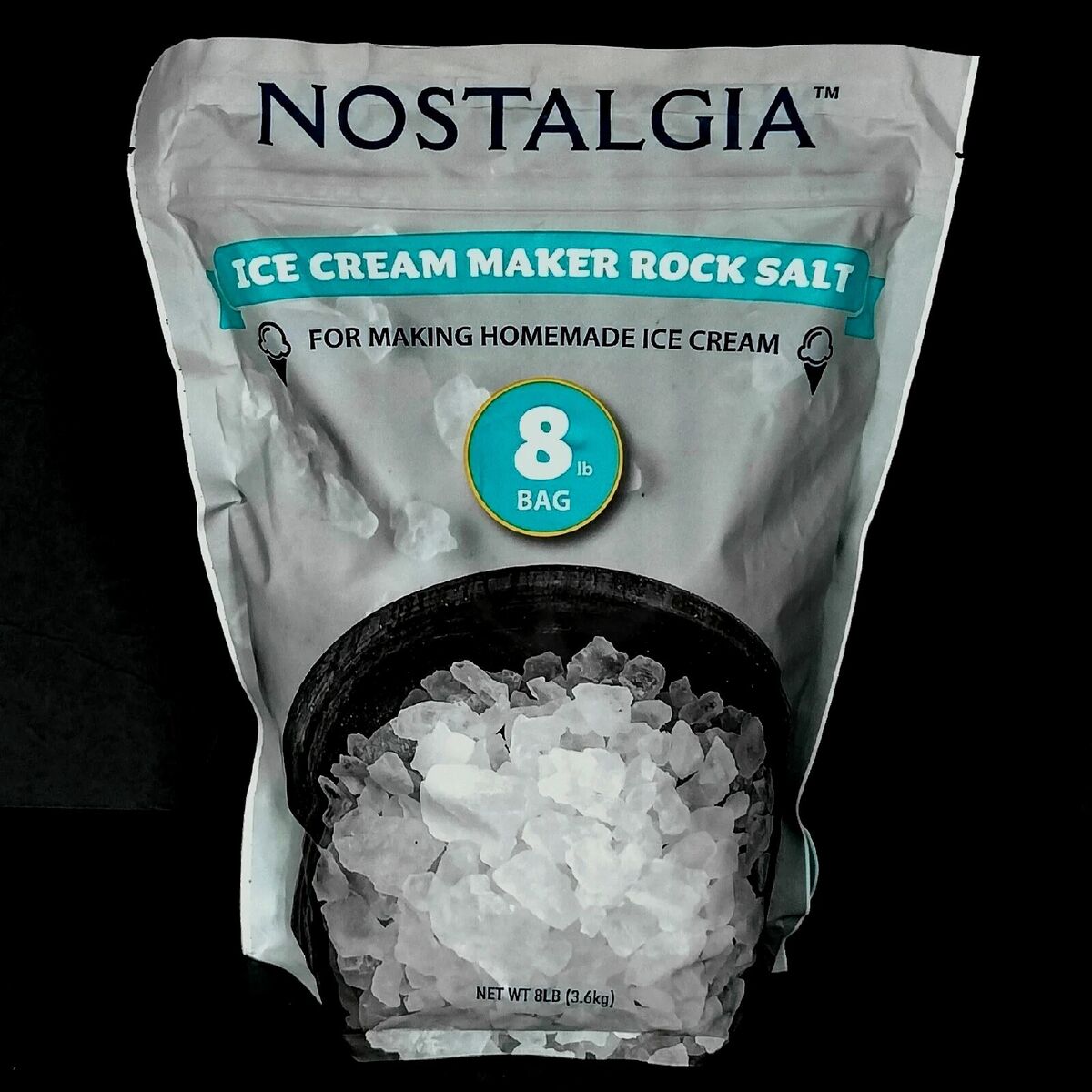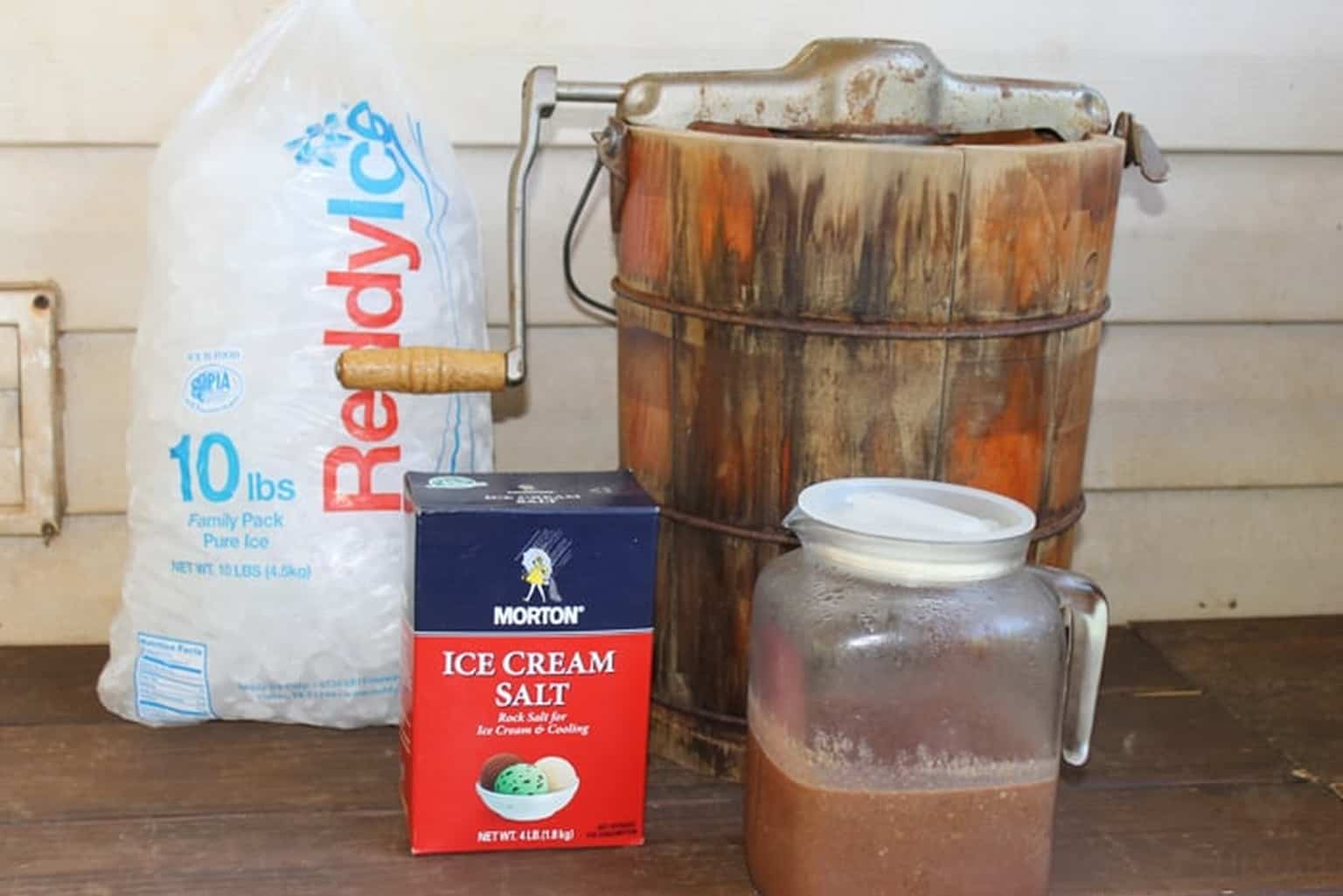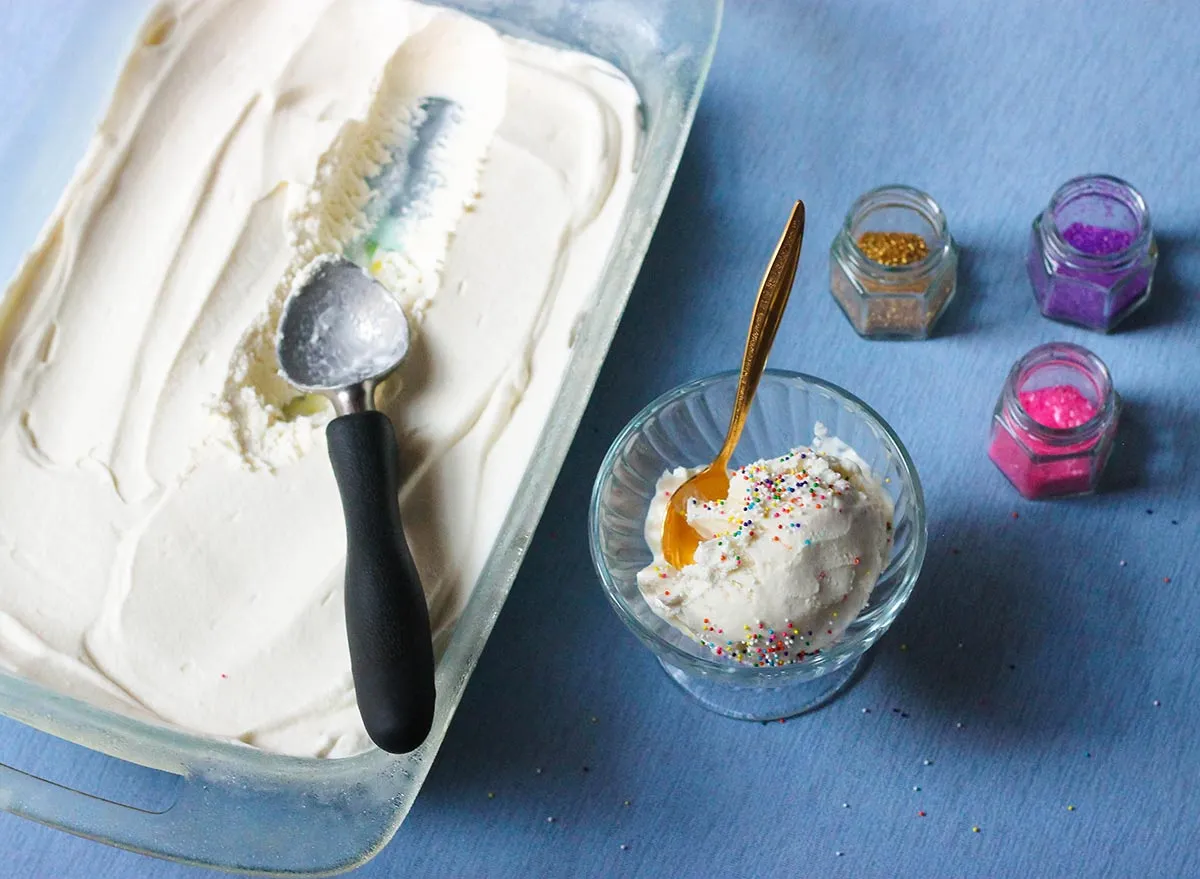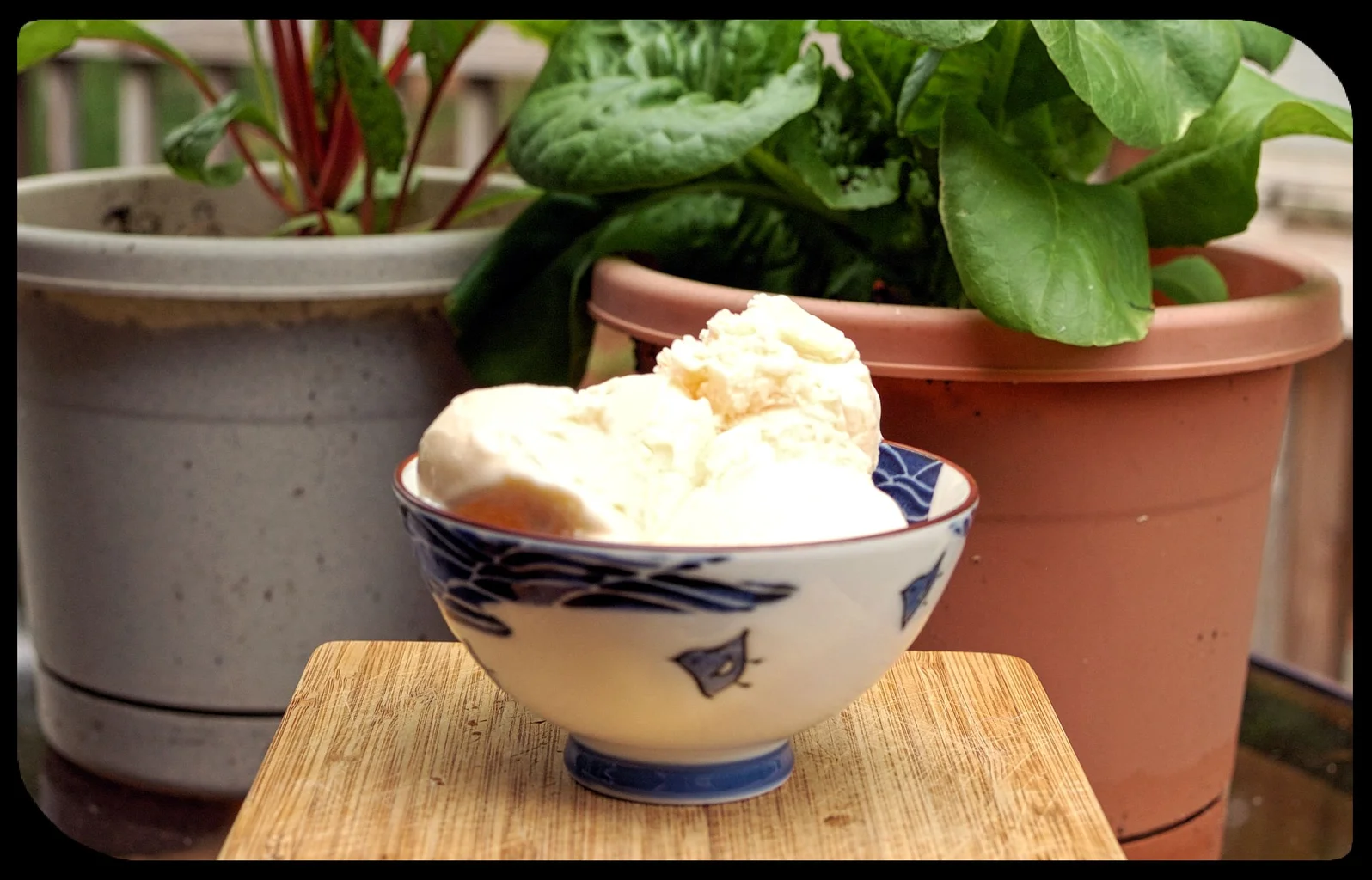Introduction
Ice cream is a delectable treat that is enjoyed by people of all ages. Whether it’s a hot summer day or a cozy winter evening, a bowl of creamy, cold ice cream always hits the spot. But have you ever wondered about the process behind making this frozen delight? One of the key components that plays a crucial role in the ice cream-making process is the use of an ice cream maker.
An ice cream maker is a device that freezes and churns the ingredients, allowing them to transform into a smooth and creamy ice cream. But how does an ice cream maker achieve this? It’s not just the magic of temperature regulation; it also involves a little chemistry, specifically the addition of salt to the ice.
Adding salt to the ice in an ice cream maker may seem counterintuitive. After all, salt is not typically associated with the sweet, creamy taste of ice cream. However, the addition of salt serves a specific purpose in the ice cream-making process. In this article, we will explore why salt is added to the ice in an ice cream maker and the effect it has on the freezing point of water.
How Does an Ice Cream Maker Work?
An ice cream maker is a device that combines the two essential processes of freezing and churning to create smooth and creamy ice cream. The key component of an ice cream maker is its inner bowl, which is filled with a mixture of ingredients like cream, sugar, and flavorings. The bowl is then placed inside a larger outer container, which is filled with a mixture of ice and salt.
The inner bowl contains a special coolant that freezes when the ice cream maker is turned on. As the coolant freezes, it absorbs heat from the cream mixture, causing it to solidify and form ice crystals. At the same time, the churner, typically a paddle or a blade, rotates inside the inner bowl, continuously scraping the frozen mixture from the sides and incorporating air into the mixture. This constant movement prevents large ice crystals from forming and ensures a smooth and creamy texture.
The role of the ice and salt mixture in the outer container is crucial to the ice cream-making process. When salt is added to the ice, it creates a brine solution. This brine solution has a lower freezing point than plain ice, allowing it to maintain a temperature below the freezing point of water. By surrounding the inner bowl with the ice-salt mixture, the ice cream maker creates a cold environment that rapidly freezes the cream mixture.
Now that we understand the basics of how an ice cream maker works, let’s delve into why adding salt to the ice is an essential step in the ice cream-making process.
Why Salt is Added to the Ice in an Ice Cream Maker
Adding salt to the ice in an ice cream maker may seem like an unusual step, but it serves a crucial purpose in the freezing process. The main reason salt is added to the ice is to lower the freezing point of the ice-water mixture.
The freezing point of water, under normal circumstances, is 32 degrees Fahrenheit (0 degrees Celsius). However, when salt is added to the ice, it disrupts the process of freezing and lowers the freezing point of the mixture. This phenomenon is known as freezing point depression. By creating a colder environment, the salt allows the ice cream mixture to freeze more quickly and efficiently.
The addition of salt to the ice creates a brine solution. This brine solution has a lower freezing point than plain ice, typically around 15-20 degrees Fahrenheit (-9 to -6 degrees Celsius). As a result, the brine solution can maintain a temperature below the freezing point of water, even when the surrounding temperature is above freezing.
When the ice cream mixture is placed inside the inner bowl of the ice cream maker, the goal is to freeze it as quickly as possible while continuously churning it to incorporate air. By using an ice-salt mixture, the ice cream maker achieves a rapid freezing process that prevents the formation of large ice crystals. This, in turn, helps create a smoother and creamier texture in the final ice cream.
In addition to lowering the freezing point, the salt also helps create a brine solution that evenly distributes the cold temperature in the outer container. This ensures that the ice cream mixture freezes uniformly, preventing any pockets of thawed or half-frozen areas in the mixture.
Now that we understand why salt is added to the ice, let’s explore the scientific principle behind the freezing point depression and how the ice-salt mixture is created in the next section.
Effect of Salt on Ice
When salt is added to ice, it has a remarkable effect on the ice’s freezing point and its ability to maintain a lower temperature. This effect is due to the process known as freezing point depression.
Freezing point depression occurs when a solute, in this case, salt, is dissolved in a solvent, which is water. Salt molecules disrupt the orderly arrangement of water molecules that typically occurs when water freezes. As a result, the freezing point of the solvent is lowered, and it requires a lower temperature for the mixture to solidify.
The reason salt lowers the freezing point of ice is because it affects the properties of the liquid water that is present in the ice-salt mixture. When salt dissolves in water, it dissociates into positive ions (cations) and negative ions (anions). These ions interact with the water molecules, disrupting the formation of the solid ice lattice and preventing the water from freezing at its normal freezing point of 32 degrees Fahrenheit (0 degrees Celsius). The more salt that is dissolved in the water, the lower the freezing point becomes.
As a result of freezing point depression, the ice-salt mixture in the outer container of the ice cream maker can maintain a temperature below the freezing point of the cream mixture inside the inner bowl. This allows the cream mixture to freeze rapidly and efficiently, ensuring a smooth and creamy texture in the final ice cream product.
It’s important to note that the amount of salt used in the ice-salt mixture is crucial. Too little salt may not lower the freezing point enough to achieve the desired results, while too much salt can create an excessively low temperature that may lead to prolonged freezing times or even damage to the ice cream maker. It’s essential to follow the manufacturer’s instructions or a trusted recipe for the recommended salt-to-ice ratio.
In the next section, we will explore how the ice-salt mixture is created in an ice cream maker and its role in the ice cream-making process.
Lowering the Freezing Point of Water
Understanding the concept of lowering the freezing point of water is crucial in comprehending why salt is added to the ice in an ice cream maker. The freezing point of water is the temperature at which it changes its state from liquid to solid, which is typically 32 degrees Fahrenheit (0 degrees Celsius) under normal conditions.
When a solute, such as salt, is added to water, it disrupts the process of freezing and lowers the freezing point of the water. This phenomenon, known as freezing point depression, occurs because the salt molecules interfere with the formation of the solid ice lattice structure.
The dissociation of salt in water creates positive ions (cations) and negative ions (anions) that interact with the water molecules. These ions disrupt the orderly arrangement of water molecules, making it more difficult for them to form ice crystals. As a result, the water with dissolved salt requires a lower temperature to freeze than pure water.
The lower freezing point of the saltwater solution allows the ice cream mixture inside the inner bowl of the ice cream maker to freeze more rapidly. By surrounding the inner bowl with an ice-salt mixture, the ice cream maker creates a cold environment that maintains a temperature below the freezing point of the cream mixture. This rapid freezing process prevents the formation of large ice crystals and promotes the formation of a smooth and creamy texture in the final ice cream product.
The amount of salt required to lower the freezing point of the ice-water mixture depends on the concentration of the salt solution. A higher concentration of salt in the water results in a lower freezing point. However, it’s important to note that there is a limit to how low the freezing point can be lowered. Too much salt can make the mixture excessively cold, leading to prolonged freezing times and potential damage to the ice cream maker.
By understanding the concept of freezing point depression, we can appreciate why adding salt to the ice in an ice cream maker is a crucial step in creating delicious homemade ice cream. In the next section, we will explore how the ice-salt mixture is created and its role in the ice cream-making process.
Creating an Ice-Salt Mixture
To create the ice-salt mixture used in an ice cream maker, you’ll need two primary ingredients: ice and salt. The combination of these two components plays a vital role in maintaining a cold environment and achieving the rapid freezing required for making homemade ice cream.
The type of salt most commonly used in ice cream making is rock salt or ice cream salt. This type of salt is coarser in texture compared to table salt, allowing it to better absorb heat and facilitate the freezing process. However, if you don’t have access to ice cream salt, table salt can be used as an alternative.
To prepare the ice-salt mixture, start by pouring a layer of ice into the outer container of the ice cream maker. It’s essential to ensure that the ice is broken into smaller pieces for better contact with the cream mixture and more efficient heat absorption. Next, sprinkle a layer of salt over the ice. The amount of salt needed will depend on the manufacturer’s instructions or the recipe you are using, but generally, a ratio of about 1 part salt to 4 parts ice is common.
Use a spoon or a spatula to carefully mix the salt and ice together. The salt will begin to dissolve in the ice, forming a brine solution. This solution has a lower freezing point than plain ice, allowing it to maintain a temperature below the freezing point of water. The brine solution is what creates the cold environment necessary for freezing the ice cream mixture rapidly.
It’s important to note that the ice-salt mixture needs to be replenished during the ice cream-making process, especially if it takes an extended period. As the ice melts and the salt is used up, the temperature of the mixture can rise, slowing down the freezing process. Adding more ice and salt as needed will help maintain a consistent cold temperature and ensure the efficient freezing of the ice cream mixture.
Now that you know how to create the ice-salt mixture, let’s explore its role in the ice cream-making process and the final steps of creating delicious homemade ice cream in the next section.
Role of the Ice-Salt Mixture in Ice Cream Making
The ice-salt mixture in an ice cream maker plays a crucial role in the freezing process and ultimately determines the texture and consistency of the final ice cream product. Let’s explore the various functions of the ice-salt mixture in ice cream making.
1. Lowering the Temperature: The primary role of the ice-salt mixture is to create a cold environment that maintains a temperature below the freezing point of the ice cream mixture. By lowering the temperature, the ice-salt mixture allows the cream mixture to freeze rapidly, preventing the formation of large ice crystals and ensuring a smooth and creamy texture in the final ice cream.
2. Heat Absorption: As the ice melts, it absorbs heat from the cream mixture inside the inner bowl of the ice cream maker. The salt added to the ice enhances the freezing process by lowering the freezing point of the water present in the ice-salt mixture. This heat absorption aids in the rapid solidification of the cream mixture, transforming it into a delectable frozen treat.
3. Temperature Regulation: The ice-salt mixture helps maintain a consistent and low temperature throughout the ice cream-making process. As the ice melts, the water evaporates and removes any excess heat from the surroundings, ensuring that the cream mixture remains at an optimal temperature for freezing.
4. Churning Aid: The ice-salt mixture provides stability and support for the churner, which is responsible for continuously scraping the frozen mixture from the sides of the inner bowl. The firmness of the ice-salt mixture allows the churner to move smoothly and efficiently, incorporating air into the mixture and preventing the formation of larger ice crystals.
5. Preservation: The ice-salt mixture helps preserve the frozen state of the ice cream during the serving and storage processes. By maintaining a cold temperature, the ice-salt mixture prevents melting, ensuring that the ice cream remains solid and retains its desirable texture and consistency.
It’s important to note that while the ice-salt mixture is crucial for effective ice cream making, proper care should be taken to ensure the correct ratio of salt to ice and appropriate replenishment as needed. It’s always recommended to follow the manufacturer’s instructions or a reliable recipe to achieve the best results.
Now that we have explored the role of the ice-salt mixture in ice cream making, let’s conclude our discussion and savor the joy of creating and indulging in homemade ice cream.
Conclusion
Ice cream making is a delightful blend of science and culinary art, and the use of an ice cream maker is essential in creating that smooth, creamy texture we all love. Throughout this article, we have explored why salt is added to the ice in an ice cream maker and the significant role it plays in the freezing process.
Adding salt to the ice lowers the freezing point of the ice-water mixture through freezing point depression. This decrease in temperature allows the cream mixture inside the inner bowl to freeze rapidly and efficiently, preventing the formation of large ice crystals and resulting in a luxurious texture in the final ice cream product.
The ice-salt mixture in the outer container of the ice cream maker creates a cold environment that regulates the temperature, absorbs heat, and provides stability for the churner. It ensures consistent freezing and churns the mixture to incorporate air, creating a smooth and creamy consistency as the ice cream freezes.
Understanding the chemistry and processes behind ice cream making empowers us to create homemade ice cream with the perfect texture and flavor. It’s important to follow proper guidelines, including the recommended salt-to-ice ratio and replenishing the ice-salt mixture as needed, to achieve optimal results.
So, the next time you indulge in a scoop of homemade ice cream, remember the importance of salt in the ice cream maker. It’s the secret ingredient that adds that extra touch to transform a creamy mixture into a frozen delight.
Now, armed with this knowledge, you can embark on your ice cream-making adventures with confidence, experimenting with flavors, and delighting friends and family with your homemade frozen creations.







